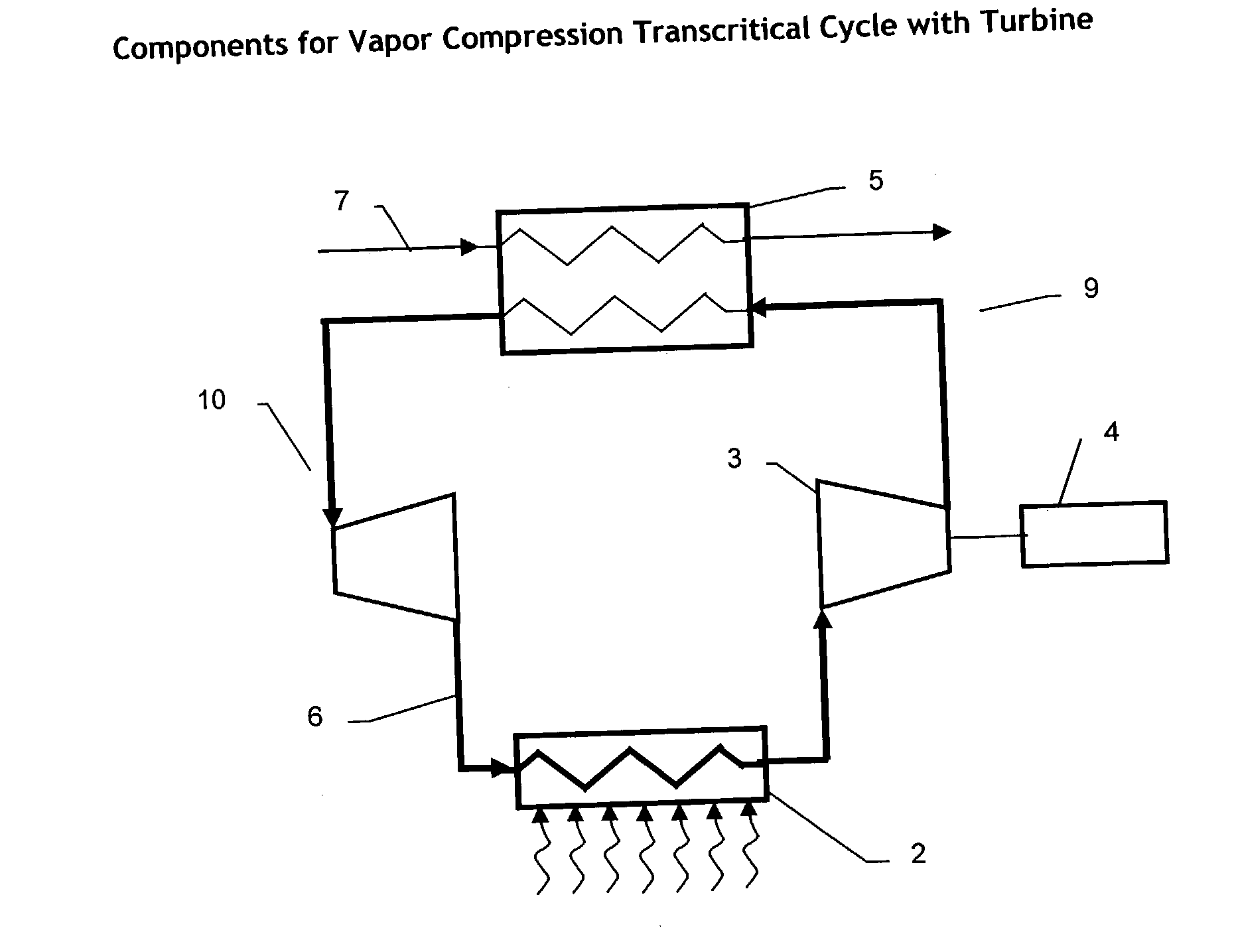Means and apparatus for microrefrigeration
a micro-refrigeration and apparatus technology, applied in the direction of domestic cooling apparatus, indirect heat exchangers, lighting and heating apparatus, etc., can solve the problems of increasing the heat dissipation level, requiring more input power than can be dissipated, and requiring more input power. to achieve the effect of sufficient cooling capacity and work more efficiently
- Summary
- Abstract
- Description
- Claims
- Application Information
AI Technical Summary
Benefits of technology
Problems solved by technology
Method used
Image
Examples
example 1
[0127] The COP of a cycle operating with a turbine in place of a throttling valve, without an intercooler, rises 28%, from 2.12 to 2.93, at constant evaporator temperature of 5.degree. C.
example 2
[0128] The COP of a cycle operating with a turbine and no intercooler can be improved more than two times, from 2.93 to 6.15, by allowing the temperature at the evaporator inlet (or turbine outlet) to rise from 5.degree. C. to 25.degree. C.
1TABLE 1 Refrigeration Performance by Cycle Type Condenser Evaporator Outlet Cycle description .degree. C. Bar .degree. C. Bar COP Throttling valve 5 39 40 98.6 2.12 Intercooler and throttling valve 5 39 40 98.6 2.26 Turbine in place of throttling 5 39 40 98.6 2.93 valve, no intercooler Turbine in place of throttling 30 71 50 103.6 1.04 valve, no intercooler Turbine in place of throttling 25 63.5 50 98.6 2.07 valve, no intercooler Turbine in place of throttling 18 53.9 40 98.6 4.56 valve, no intercooler Turbine in place of throttling 25 63.5 40 98.6 6.15 valve, no intercooler
[0129]
2TABLE 2 Annotation of Drawings 1 Cycle components 2 Heat accepter 3 Compressor 4 Motor 5 Heat rejecter 6 Working fluid 7 Ambient fluid 10 Turbine 11 Coupling shaft (op...
PUM
 Login to View More
Login to View More Abstract
Description
Claims
Application Information
 Login to View More
Login to View More - R&D
- Intellectual Property
- Life Sciences
- Materials
- Tech Scout
- Unparalleled Data Quality
- Higher Quality Content
- 60% Fewer Hallucinations
Browse by: Latest US Patents, China's latest patents, Technical Efficacy Thesaurus, Application Domain, Technology Topic, Popular Technical Reports.
© 2025 PatSnap. All rights reserved.Legal|Privacy policy|Modern Slavery Act Transparency Statement|Sitemap|About US| Contact US: help@patsnap.com



